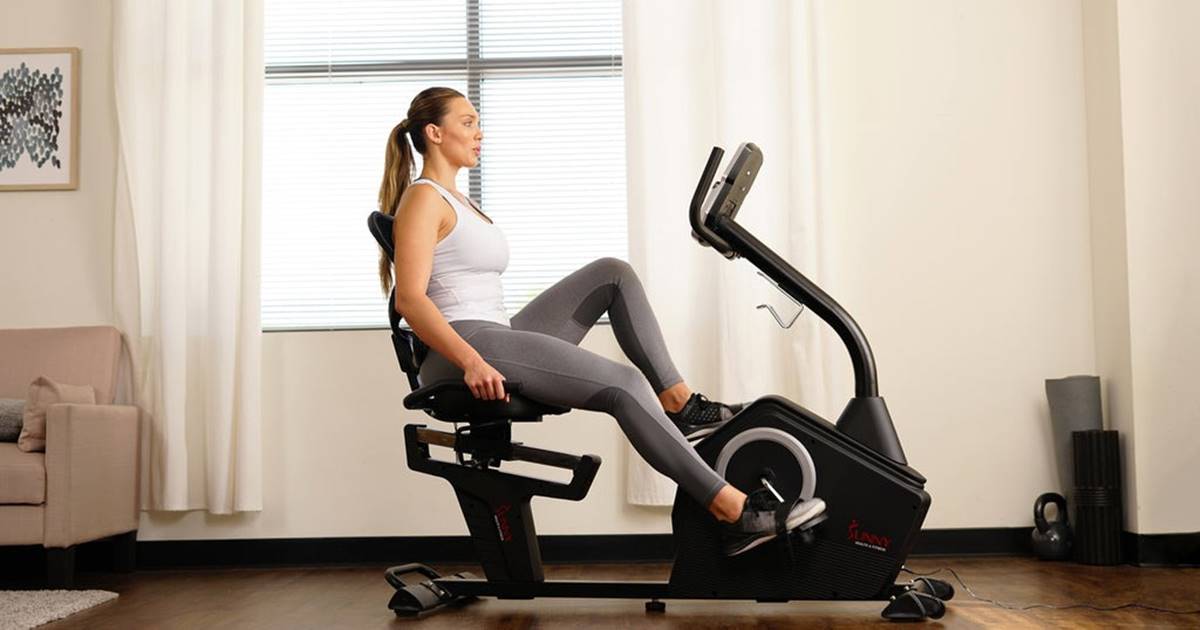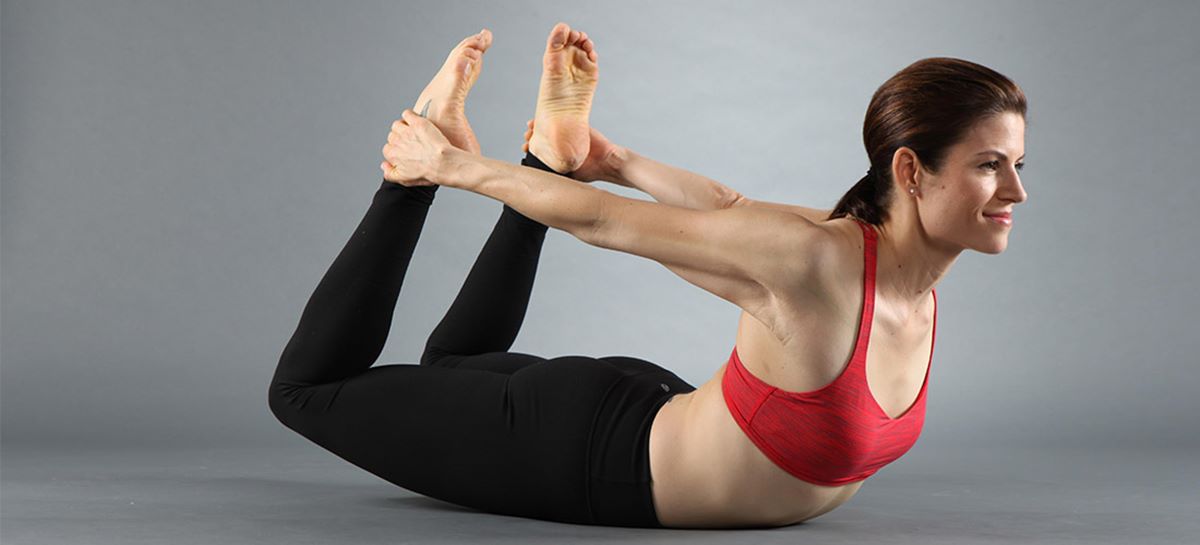Home>Misc>Featured>How Does Fitness Tracker Convert Bike To Steps
Featured
How Does Fitness Tracker Convert Bike To Steps
Published: October 17, 2023
Discover how fitness trackers can convert your biking activity into steps and keep you featured in your fitness journey. Get insights on the latest featured fitness tracker technology.
Introduction
Fitness trackers have become increasingly popular and are hailed as valuable tools for monitoring physical activity and promoting a healthier lifestyle. These wearable devices track various metrics such as steps taken, calories burned, and distance covered throughout the day. While they are commonly used for activities like walking, running, and jogging, many fitness enthusiasts wonder if it is possible to convert bike activity into steps.
Converting bike activity to steps can be a great way to keep track of your overall physical activity, especially if cycling is a significant part of your exercise routine. However, it’s important to understand how fitness trackers work and the factors that affect the accuracy of step conversion in order to make the most of this feature.
In this article, we will delve into the world of fitness trackers, explore how they convert bike activity to steps, and discuss the benefits and limitations of this conversion. We will also provide some tips on how to ensure accurate tracking of your bike activity. So, if you’re eager to know how your fitness tracker can help you monitor your cycling efforts, read on!
Understanding Fitness Trackers
Fitness trackers are wearable devices that are designed to monitor and track various aspects of your physical activity and health. They come in various forms, including wristbands, clip-on devices, and smartwatches. These devices are equipped with sensors that detect and analyze your movements, heart rate, and other physiological data to provide valuable insights into your fitness progress.
Most fitness trackers use accelerometers to measure your movement and calculate the number of steps you take. These accelerometers sense the acceleration, or change in motion, and can differentiate between various types of movement, such as walking, running, or even cycling. They can also estimate the distance you’ve traveled and the calories you’ve burned based on the intensity and duration of your activity.
In addition to step tracking, fitness trackers often offer a range of features such as heart rate monitoring, sleep tracking, GPS navigation, and even smartphone notifications. These additional features make fitness trackers versatile tools for tracking different aspects of your daily life and promoting overall well-being.
It’s important to note that fitness trackers rely on algorithms and predefined settings to interpret the data collected by their sensors. While they strive to provide accurate information, there may be some limitations and variations in the data recorded by different devices.
Now that we have a basic understanding of fitness trackers, let’s explore how they convert bike activity into steps and the factors that can affect the accuracy of this conversion.
Converting Bike Activity to Steps
When it comes to converting bike activity to steps, fitness trackers use a combination of the device’s built-in sensors and algorithms to estimate the number of steps taken during a cycling session. While cycling does not involve the same repetitive motion as walking or running, fitness trackers can still provide an approximation of steps based on factors such as cadence and intensity.
Cadence is a term used to describe the rate at which a cyclist pedals. It represents the number of revolutions the pedals make per minute (RPM). Fitness trackers that offer bike activity tracking typically have an option to enter or measure your cadence manually. By knowing your average cadence, the device can estimate the number of steps equivalent to the pedal revolutions made during a cycling session.
Intensity is another factor that influences the conversion of bike activity to steps. Fitness trackers use accelerometers to detect the intensity of your cycling based on the vibrations and movements of your body. Higher intensity workouts, such as cycling uphill or sprinting, are likely to generate more movement and vibrations, thereby resulting in a higher step count.
It’s important to note that the accuracy of step conversion for bike activity can vary between different fitness trackers. Some devices may have more advanced algorithms and sensors that provide a more accurate estimation, while others may be less precise. It’s recommended to consult the manufacturer’s documentation or user reviews to get an idea of the accuracy of bike activity tracking for a specific fitness tracker model.
While converting bike activity to steps can be helpful in tracking your overall physical activity, it’s important to remember that steps are not the only measure of a cycling workout’s effectiveness. Cycling offers unique benefits such as cardiovascular conditioning, muscle toning, and improved endurance. Therefore, it’s important to view step conversion as an additional metric rather than the sole indicator of your cycling performance.
Now that we understand how fitness trackers convert bike activity to steps, let’s explore the factors that can affect the accuracy of this conversion.
Factors Affecting Accuracy of Step Conversion
While fitness trackers can provide a convenient way to convert bike activity into steps, there are several factors that can affect the accuracy of this conversion. It’s essential to be aware of these factors to better understand the limitations of step tracking during cycling sessions.
1. Cadence and Pedaling Technique: The accuracy of step conversion relies on the correct measurement of your cadence. If your fitness tracker does not accurately measure your cadence or if your pedaling technique varies significantly during a cycling session, it may result in an inaccurate step count.
2. Intensity and Terrain: As mentioned earlier, the intensity of your cycling workout affects the step conversion. Steeper terrains or higher resistance settings on stationary bikes can increase the vibrations and movements of your body, resulting in a higher step count. Conversely, cycling on flat terrains or with lower resistance may yield fewer steps.
3. Device Placement: The placement of your fitness tracker can also impact the accuracy of step conversion. Wrist-worn trackers may not accurately capture the movement of your legs during cycling. In such cases, attaching the tracker to your ankle or shoe may provide better results as it can better capture the movement of your feet.
4. Device Calibration: Calibration plays a crucial role in the accuracy of step conversion for bike activity. Make sure to calibrate your fitness tracker according to the manufacturer’s instructions. This calibration process accounts for factors like your height, weight, and stride length, which can affect the accuracy of step tracking.
5. Environmental Factors: External factors such as vibrations from uneven road surfaces or rough terrain can introduce inaccuracies in step conversion. Similarly, outdoor cycling in areas with poor GPS signals may affect the accuracy of distance tracking and consequently, step conversion.
It’s important to note that while fitness trackers strive for accuracy, they are not infallible, and there may be some limitations in their ability to convert bike activity to steps. It’s always a good idea to interpret the step count as an estimation rather than an exact measurement.
Now that we’ve discussed the factors that can affect the accuracy of step conversion during cycling, let’s explore the benefits of converting bike activity to steps.
Benefits of Converting Bike to Steps
Converting bike activity to steps using a fitness tracker can offer several benefits, both in terms of tracking your overall physical activity and motivating you to stay active. Here are some of the advantages of using this feature:
1. Comprehensive Activity Tracking: By converting your bike activity to steps, you can have a more comprehensive view of your daily physical activity. This can be particularly helpful if you use your fitness tracker to monitor your overall step count and set goals to stay active throughout the day.
2. Easy Goal Setting: Many fitness trackers allow you to set step-based goals for the day. By converting bike activity to steps, you can include your cycling efforts in these goals. This can provide a sense of achievement and motivation to meet and exceed your daily activity targets.
3. Improved Accountability: Converting bike activity to steps can help you track your cycling progress and hold yourself accountable for your workouts. It provides a tangible metric to measure your effort, making it easier to track improvements and identify areas for further development.
4. Comparative Analysis: By having a unified step count that includes both walking and cycling, you can compare your activity levels across different days or weeks. This allows you to identify patterns, track trends, and make adjustments to your fitness routines as needed.
5. Health Insights: Converting bike activity to steps can contribute to a more holistic understanding of your health. By combining your cycling efforts with your walking or running activities, you can assess your overall physical exertion and ensure you’re meeting the recommended daily activity levels for a healthier lifestyle.
It’s important to note that while converting bike activity to steps offers these benefits, it should not replace the acknowledgement of cycling’s unique benefits. Cycling provides cardiovascular benefits, muscle strengthening, and a low-impact exercise option that may not be fully captured by step counting alone. However, integrating bike activity into your overall step count can contribute to a more complete picture of your physical activity.
Now that we’ve explored the benefits of converting bike activity to steps, let’s discuss the limitations of this conversion.
Limitations of Bike-to-Step Conversion
While converting bike activity to steps can be a useful feature, it’s important to be aware of the limitations associated with this conversion. Here are some key limitations to consider:
1. Inaccurate Estimation: Converting bike activity to steps relies on algorithms and assumptions. Due to the unique motion and intensity of cycling, the step count provided by fitness trackers may not always be accurate. Factors such as cadence, intensity, and device placement can affect the accuracy of the estimation.
2. Stride Length Assumption: Fitness trackers typically assume a default stride length for step conversion. However, this assumption may not be accurate for everyone, especially cyclists with different leg lengths or pedaling styles. As a result, the step count may not truly reflect the distance covered through cycling.
3. Limited Context: Converting bike activity to steps does not provide a complete picture of the cycling workout. It may not account for factors like resistance settings, elevation changes, or the specific cycling technique used. It’s important to view step conversion as an additional metric rather than a comprehensive reflection of your cycling performance.
4. Inconsistencies in Device Accuracy: Different fitness trackers may offer varying levels of accuracy when converting bike activity to steps. Some devices may have more advanced algorithms and sensors, providing a more accurate estimation, while others may be less precise. It’s recommended to research and compare different fitness tracker models to find one that aligns with your cycling needs.
5. Dependence on Device Calibration: The accuracy of step conversion for bike activity relies on the proper calibration of your fitness tracker. Failing to calibrate your device correctly, inputting inaccurate data, or forgetting to update settings can introduce errors in the step count. Regular calibration is essential to maintain accuracy.
Despite these limitations, converting bike activity to steps can still serve as a helpful tool for tracking and comparing your overall physical activity. It’s important to utilize step counts as a general guideline rather than relying on them as precise measurements.
Now that we understand the limitations of bike-to-step conversion, let’s explore some tips for accurate bike activity tracking.
Tips for Accurate Bike Activity Tracking
To ensure accurate bike activity tracking and improve the precision of step conversion, consider the following tips:
- Choose a Suitable Tracker: Look for a fitness tracker that is known for its accurate bike activity tracking capabilities. Read reviews, compare features, and choose a device that is well-suited for cycling.
- Calibrate Your Device: Follow the manufacturer’s instructions to calibrate your fitness tracker correctly. Input your specific height, weight, and other relevant information to ensure accurate step counting.
- Check Device Placement: Pay attention to the placement of your fitness tracker during bike activity. Wrist-worn devices may not accurately capture pedaling movements. Consider wearing the tracker on your ankle or attaching it to your shoe for better accuracy.
- Use Cadence Sensors: If your fitness tracker supports it, utilize external cadence sensors that can provide more accurate and real-time data about your pedal revolutions. This can help improve the accuracy of step conversion.
- Be Consistent with Device Usage: Use the same fitness tracker consistently for tracking your bike activity. Switching between different devices or using multiple devices simultaneously can lead to inconsistencies in step counting.
- Regularly Update Firmware: Keep your fitness tracker’s firmware up to date. Manufacturers often release firmware updates to address known bugs and improve the accuracy of various tracking features, including step conversion.
- Consider Manual Entry: If your fitness tracker does not provide reliable bike activity tracking or if you prefer a more precise measurement, consider manually entering your cycling data based on the duration and intensity of your workout.
- Combine Step Tracking with Other Metrics: Instead of solely relying on step conversion, consider using other metrics such as duration, distance, and heart rate to evaluate the effectiveness of your cycling workouts.
- Keep Record of Your Cycling Stats: Maintain a log of your cycling sessions, including distance, time, and perceived exertion. This will allow you to track your progress and compare it with the step counts provided by your fitness tracker.
By following these tips, you can enhance the accuracy of bike activity tracking and step conversion, providing you with more meaningful insights into your cycling workouts.
Now that we’ve explored tips for accurate bike activity tracking, let’s conclude our article.
Conclusion
Fitness trackers have revolutionized the way we monitor and track our physical activity, providing valuable insights into our daily routines and motivating us to lead healthier lives. While converting bike activity to steps is a feature that many fitness enthusiasts are interested in, it’s important to understand its limitations and factors that can affect its accuracy.
Through the use of accelerometers and algorithms, fitness trackers estimate the number of steps taken during a cycling session based on factors such as cadence and intensity. However, the accuracy of step conversion can vary between devices and is influenced by factors such as pedaling technique, device placement, and calibration.
Despite these limitations, converting bike activity to steps offers several benefits. It allows for comprehensive activity tracking, easy goal setting, improved accountability, comparative analysis, and insights into overall health. However, it’s important to remember that step conversion should be viewed as an additional metric and not as a complete reflection of cycling performance.
To ensure accurate bike activity tracking, it is advisable to choose a suitable fitness tracker, properly calibrate the device, and pay attention to device placement. Utilizing cadence sensors, remaining consistent with device usage, and considering manual entry of cycling data can also improve accuracy. Additionally, combining step tracking with other metrics and keeping a record of cycling statistics can provide a more comprehensive view of your workouts.
Ultimately, fitness trackers are powerful tools that can assist in monitoring and optimizing our physical activity. By understanding how they convert bike activity to steps and taking the necessary steps to improve accuracy, we can make the most of these devices and enhance our fitness journey.


